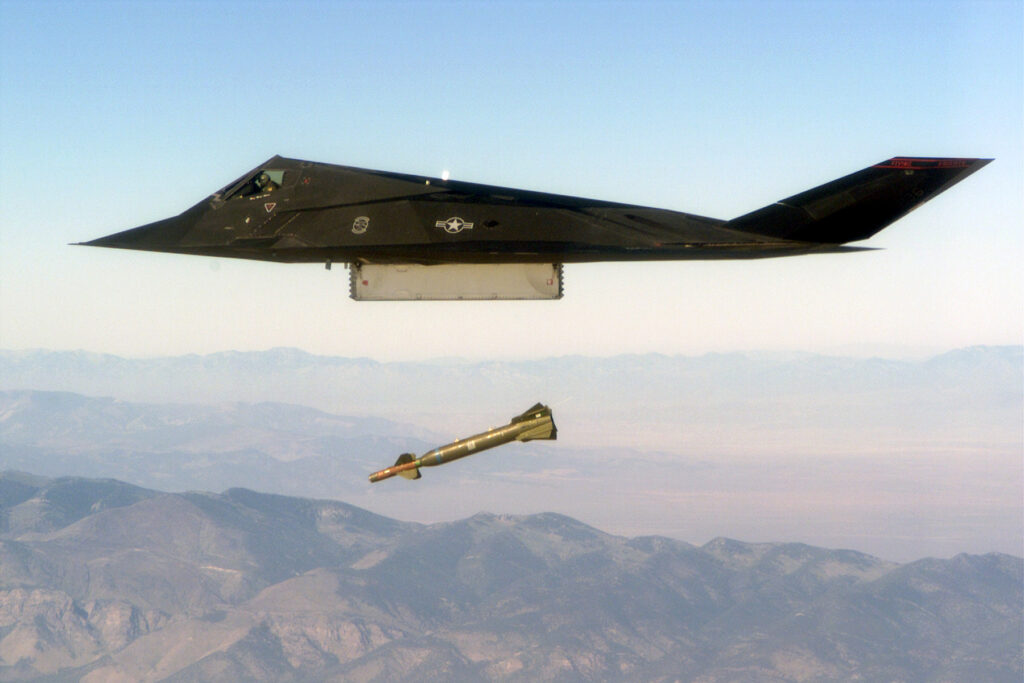The F-117 Nighthawk, famously known as the world’s first operational stealth aircraft, has a storied history in the U.S. military. Officially retired in 2008, the Nighthawk was celebrated for its groundbreaking design and capability to evade radar detection, marking a significant leap in aerial warfare technology. However, despite its retirement, some F-117s remain operational. This article explores the reasons behind the continued use of this iconic aircraft.
1. Historical Significance and Legacy
The F-117 holds a unique place in military aviation history. Its innovative stealth technology and successful missions during the Gulf War not only demonstrated the effectiveness of stealth but also paved the way for future aircraft designs, such as the F-22 and F-35. Maintaining a small fleet of F-117s allows the U.S. Air Force to preserve this legacy and the associated knowledge about stealth technology, which can be invaluable for training and research.
2. Training and Tactics Development
The F-117s serve as a valuable resource for training purposes. Their continued operation provides pilots and ground crews with insights into stealth tactics and operational procedures that can enhance the effectiveness of newer aircraft. Furthermore, using these retired airframes allows the Air Force to refine tactics in low-observable operations without the risks and costs associated with flying active-duty jets.
3. Cost-Effectiveness
While maintaining older aircraft can seem counterintuitive, the F-117s offer a cost-effective solution for certain missions. Their operational costs are lower compared to more advanced stealth aircraft, and they can still perform a variety of roles, such as training, test operations, or even limited combat support in specific scenarios where their capabilities can be effectively leveraged.
4. Adaptability for Unmanned Systems
The F-117’s design and technology have applications in the development of unmanned systems. By retaining and operating these aircraft, the U.S. Air Force can explore how to integrate advanced technologies, including unmanned aerial vehicles (UAVs) and artificial intelligence, into stealth operations. This adaptability allows for experimentation and research that could influence future aerial warfare strategies.
5. Technological Development and Testing
The Air Force often uses retired aircraft for testing new technologies. The F-117 provides a platform to evaluate advancements in stealth technology, avionics, and weapon systems. These tests help inform the development of next-generation aircraft and ensure that the U.S. maintains its edge in aerial combat capabilities.
6. Symbol of U.S. Aerial Superiority
Finally, the continued operation of the F-117 serves as a symbolic reminder of U.S. military prowess. Even though it has been replaced in frontline roles, the Nighthawk represents the evolution of air combat and the U.S.’s commitment to innovation in military technology. Its presence in the fleet underscores the importance of maintaining a diverse range of capabilities, even if some are not at the forefront of current operational strategies.
Conclusion
The decision to keep some F-117 Nighthawks operational, despite their official retirement, is rooted in a combination of historical significance, training utility, cost-effectiveness, technological adaptability, and symbolic value. As military strategy and technology continue to evolve, the F-117 remains an important part of the U.S. Air Force’s toolkit, illustrating that sometimes, legacy systems can still contribute meaningfully to modern military operations.

